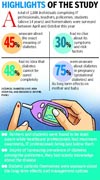09 November 2011
By Umesh Isalkar
Pune India
The general awareness about diabetes and its various complications is, surprisingly, very low among Puneites, reveals a survey conducted by KEM hospital’s diabetes< unit.
Of the 1,000 individuals, comprising IT professionals, teachers, policemen, students (above 14 years) and homemakers, surveyed in the last six months — 45% were unaware about the exact meaning of diabetes, 30% had no clue about its symptoms and risk factors, 48% had no idea that diabetes cannot be cured completely and 75% were unaware about diabetes during pregnancy (gestational diabetes) and its long term effects on the mother and baby.
According to the latest clinic–based survey ‘Screening India’s Twin Epidemic (SITE), one in every five Indian adults living in urban cities suffers not only from hypertension but also diabetes. In Maharashtra, more disturbingly, one in three persons is struck by the twin epidemic. According to a recent survey conducted by Indian Council of Medical Research (ICMR), India has around 62.5 million individuals with diabetes, while 77.5 million have pre–diabetes.
“Proper management requires patients to be aware of the nature of the disease, its risk factors, its treatment and its complications. But few attempts are made to assess the educational need of the patients. Our study has revealed that the level of awareness about diabetes is very low in Pune. Low level of awareness can confound treatment and better management of the disease,`” said researcher Tejas Limaye, a clinical nutritionist and certified diabetes educator at the diabetes unit of KEM hospital and research centre.
The questionnaire–based survey, which began in April, stretched for the next six months and concluded on October 31. Questions like — Do you know what diabetes is? What increases risk of diabetes? What are the signs and symptoms of diabetes? Do women with diabetes in pregnancy have a higher risk of developing diabetes later in life? Are children born to diabetic mothers prone to develop diabetes in future? Can diabetes be cured completely? — were asked during the survey.
The researchers visited IT companies, schools, police stations, households to gauge the level of awareness in the city. They also visited Vadhu, a small town in the district, where they interviewed some farmers.
“Farmers and students were found to be least aware. Healthcare professionals had maximum awareness, while IT professionals were just below them. In spite of increasing cases of diabetes among the police force, they had scanty knowledge about the disease. Diabetic patients themselves were unaware about the long–term effects and management options,`” said another researcher Sonali Wagle, a clinical nutritionist and certified diabetes educator at the diabetes unit of KEM hospital.
Most strikingly, 70% people said diabetes and its complications can be prevented, but looking at the drastic increase in the disease’s rate (in India, approximately 2 million new cases are diagnosed per year) and its complications, this awareness does not reflect in action, the researchers said.
Some of the responses showed abysmal ignorance about the disease. “Like one person answered eating sugar and sweets causes diabetes, which is not completely true. Some recounted lack of sleep and hair fall as signs and symptoms of diabetes,`” said Limaye. “Avoiding eating sugar is the only remedy or preventive measure answered by many people — a common perception which is not completely true,`” Limaye said.
After the survey was carried out, subjects were educated with the help of informative leaflets, group discussions, lectures, slide shows, etc. The project was carried out under the guidance of senior diabetologist Chittaranjan Yajnik, cardiologist Ravindra Kulkarni and statistician Charudatta Joglekar.
“Despite its prevalence, public awareness about diabetes is very low. This study emphasises the need to take more such initiatives to increase awareness in the community about this silent killer. If students are wellversed about diabetes and its preventive measures at an early age, the disease can be combated efficiently,`” said Yajnik, head of the diabetes unit, KEM Hospital.
The scary part is when someone tests positive for diabetes, the affliction, also known as the ‘silent killer', has been working in the background in that person’s body.
“When you find out your glucose level is high, that is not when diabetes has begun. The disease begins many years before it is diagnosed and, hence, people come with complications because they never check their glucose level,” Yajnik said. It is important to go for glucose testing after 30 years of age, he advises.
Diabetes education and care management can improve patient outcome, glycemic control and quality of life of patient. Proper management requires patients to be aware of the nature of the disease and its risks.
What is Diabetes ?Diabetes is a chronic disease that occurs when the pancreas does not produce enough insulin, or when the body cannot effectively use the insulin it produces. Hyperglycemia, or raised blood sugar, is a common effect of uncontrolled diabetes and, over time, leads to serious damage to many of the body's systems, especially the nerves and blood vessels.







